Nursing: A Concept-Based Approach to Learning Volume TWO 3rd Edition, ISBN-13: 978-0134616810
Original price was: $50.00.$14.99Current price is: $14.99.
Nursing: A Concept-Based Approach to Learning Volume TWO 3rd Edition, ISBN-13: 978-0134616810
[PDF eBook eTextbook]
- Publisher: Pearson; 3rd edition (January 19, 2018)
- Language: English
- 1408 pages
- ISBN-10: 0134616812
- ISBN-13: 978-0134616810
For courses in concept-based nursing.
#1 curriculum choice for concept-based schools of nursing.
Nursing: A Concept-Based Approach to Learning provides all of the core content and materials needed to deliver an effective concept-based program that develops practice-ready nurses. This three-volume series is the only concepts curriculum developed from the ground up as a cohesive, comprehensive learning system. An intentional instructional design and learning pattern fosters connections between concepts and a deep level of comprehension that can be applied broadly. Volume II focuses on 30 crucial psychosocial, reproductive, nursing, and healthcare concepts, and then turns to the nurse’s broader roles in areas such as accountability, advocacy, and safety. The 3rd edition is a full-scale, cover-to-cover revision that brings the text in line with new evidence-based practice, care, and safety guidelines.
Table of Contents:
Brief Contents of Volume 1
Brief Contents of Volume 2
Help your students learn to Think Like a Nurse with new digital learning resources in Concepts Nursing!
Nursing A Concept-Based Approach to Learning
Pearson’s Concepts Solution
What Makes Pearson’s Solution Different?
Why Teach Concept-based Learning?
Organization and Structure of the Third Edition
Structure and Features of the Concepts
Case Studies
Structure and Features of the Exemplars
Additional Features
MyLab Nursing
Resources
Concepts Editorial Board
Contributors
Reviewers
Contents
Part II Psychosocial Modules
Module 22 Addiction
Module Outline and Learning Outcomes
The Concept of Addiction
Concept Key Terms
Addiction
Physiology and Psychology of Addiction
Biological Factors
Genetic Factors
Psychologic Factors
Sociocultural Factors
Manifestations of Substance Use Disorders
Prevalence
The Language of Addiction and Recovery
Comorbidities
Effects of Addiction on Families
Clinical Reasoning Questions Level I
Clinical Reasoning Questions Level II
Process Disorders
Concepts Related to Addiction
Health Promotion
Nursing Assessment
Observation and Patient Interview
Physical Examination
Diagnostic Tests
Clinical Reasoning Questions Level I
Clinical Reasoning Questions Level II
Independent Interventions
Promote Communication
Limit Setting and Boundary Violations
Promote Adequate Nutrition
Promote Participation in Treatment
Collaborative Therapies
Behavior-Related Therapies
Milieu Therapy
Group Therapy
Support Groups
Twelve-Step Programs
Family Therapy
Pharmacologic Therapy
Lifespan Considerations
Addiction in Children and Adolescents
Addiction in Pregnant Women
Addiction in Older Adults
Impaired Nurses
Clinical Reasoning Questions Level I
Clinical Reasoning Questions Level II
Review The Concept of Addiction
Relate Link the Concepts
READY Go to Volume 3: Clinical Nursing Skills
Refer Go to Pearson MyLab Nursing and eText
Reflect Apply Your Knowledge
Exemplar 22.A Alcohol Abuse
Exemplar Learning Outcomes
Exemplar Key Terms
Overview
Pathophysiology and Etiology
Pathophysiology
Etiology and Epidemiology
Risk Factors and Prevention
Clinical Manifestations of Alcohol Abuse
Alcohol Intoxication and Overdose
Consequences of Chronic Use
Multisystem Effects
Alcohol Abuse and Memory
Alcohol Withdrawal
Collaboration
Diagnostic Tests
Treatment of Withdrawal
Complementary Health Approaches
Lifespan Considerations
Alcohol Abuse Among Adolescents
Alcohol Abuse Among Women
Alcohol Abuse Among Pregnant Women
Alcohol Abuse Among Older Adults
Nursing Process
Assessment
Diagnosis
Planning
Implementation
Promote Patient Safety During Acute Withdrawal
Promote Safety in Outpatient and Home Settings
Promote Healthy Self-Esteem
Provide Patient Education
Evaluation
Review Alcohol Abuse
Relate Link the Concepts and Exemplars
READY Go to Volume 3: Clinical Nursing Skills
Refer Go to Pearson MyLab Nursing and eText
Reflect Apply Your Knowledge
Exemplar 22.B Nicotine Use
Exemplar Learning Outcomes
Exemplar Key Terms
Overview
Pathophysiology and Epidemiology
Pathophysiology
Etiology and Epidemiology
Risk Factors
Prevention
Clinical Manifestations
Collaboration
Nicotine Replacement Therapy
Smoking Cessation Programs
Complementary Health Approaches
Lifespan Considerations
Nicotine Addiction in Adolescents
Nicotine Addiction in Pregnant Women
Nicotine Addiction in Older Adults
Nursing Process
Assessment
Diagnosis
Planning
Implementation
Evaluation
Review Nicotine Use
Relate Link the Concepts and Exemplars
READY Go to Volume 3: Clinical Nursing Skills
Refer Go to Pearson MyLab Nursing and eText
Reflect Apply Your Knowledge
Exemplar 22.C Substance Abuse
Exemplar Learning Outcomes
Exemplar Key Terms
Overview
Pathophysiology and Epidemiology
Pathophysiology
Etiology and Epidemiology
Risk Factors
Clinical Manifestations
Caffeine
Cannabis
Central Nervous System Depressants
Psychostimulants
Opiates
Hallucinogens
Inhalants
Collaboration
Diagnostic Tests
Pharmacologic Therapy
Emergency Care for Overdose
Complementary Health Approaches
Lifespan Considerations
Substance Abuse in Adolescents
Substance Abuse in Pregnant Women
Substance Abuse in Older Adults
Nursing Process
Assessment
Observation and Patient Interview
History of Past Substance Use
Medical and Psychiatric History
Psychosocial Issues
Screening Tools
Diagnosis
Planning
Implementation
Promote Safety
Promote Patient Safety During Withdrawal
Provide Patient Education
Evaluation
Review Substance Abuse
Relate Link the Concepts and Exemplars
READY Go to Volume 3: Clinical Nursing Skills
Refer Go to Pearson MyLab Nursing and eText
Reflect Apply Your Knowledge
References
Module 23 Cognition
Module Outline and Learning Outcomes
The Concept of Cognition
Concept Key Terms
Normal Cognition
Key Components and Categories
Perception
Attention
Memory
Communication and Social Cognition
Motor Coordination
Executive Function
Intellectual Function
Adaptive Behavior
Physiology Review
Normal Genetic Variations
Alterations to Cognition
General Manifestations of Altered Cognitive Function
Alterations in Perception
Alterations in Attention
Alterations in Memory
Alterations in Communication
and Social Cognition
Alterations in Motor Coordination
Alterations in Executive Function
Alterations in Intellectual Function
and Learning
Selected Alterations for Cognition
Selected Learning Disabilities
Selected Intellectual Disabilities
Down Syndrome
Fragile X Syndrome
Fetal Alcohol Syndrome
Other Preventable Causes of
Intellectual Disability
Delirium
Dementia
Schizophrenia Spectrum and Other
Psychotic Disorders
Risk Factors for Altered
Cognitive Function
Clinical Reasoning Questions Level I
Clinical Reasoning Questions Level II
Concepts Related to Cognition
Health Promotion
Prevention
Screening and Early Detection
Nursing Assessment
Observation and Patient Interview
Biophysical and Psychosocial History
History of the Current Problem
History of Prior Biophysical and
Psychosocial Alterations
Physical and Mental Status Examination
Physical Examination
Mental Status Examination
Diagnostic Tests
Clinical Reasoning Questions Level I
Clinical Reasoning Questions Level II
Independent Interventions
Prevention and Coordination of Care
Promoting Safety and Well-Being
Advocating for Patients
Collaborative Therapies
Pharmacologic Therapy
Lifespan Considerations
Cognition from Conception
to Adolescence
Cognition from Adolescence
to Adulthood
Cognition from Adulthood through Middle Age
Cognition in Older Adults
Clinical Reasoning Questions Level I
Clinical Reasoning Questions Level II
Review The Concept of Cognition
Relate Link the Concepts
READY Go to Volume 3: Companion Skills Manual
Refer Go to Pearson MyLab Nursing and eText
Reflect Apply Your Knowledge
Exemplar 23.A Alzheimer Disease
Exemplar Learning Objectives
Exemplar Key Terms
Overview
Pathophysiology and Etiology
Pathophysiology
Etiology
Cholinergic Hypothesis
Amyloid Hypothesis
Tau Hypothesis
Risk Factors
Prevention
Clinical Manifestations
Collaboration
Diagnostic Tests
Pharmacologic Therapy
NMDA Receptor Antagonists and Combination Agents
NMDA Receptor Antagonists
Other Medications Used to Treat AD Symptoms
Nonpharmacologic Therapy
Reality Orientation
Validation Therapy
Reminiscence Therapy
Complementary Health Approaches
Nursing Process
Assessment
Observation and Patient Interview
Cognitive Mental Status
Physical Examination
Functional Status
Behavioral Status
Caregiver/Living Environment
Diagnosis
Planning
Implementation
Promote Safety and Physiologic Integrity
Promote Adaptive Functioning and Coping
Provide End-of-Life Care
Evaluation
Review Alzheimer Disease
Relate Link the Concepts and Exemplars
READY Go to Volume 3: Clinical Nursing Skills
Refer Go to Pearson MyLab Nursing and eText
Reflect Apply Your Knowledge
Exemplar 23.B Delirium
Exemplar Learning Objectives
Exemplar Key Terms
Overview
Pathophysiology and Etiology
Pathophysiology
Etiology
Risk Factors
Prevention
Clinical Manifestations
Collaboration
Diagnostic Tests
Pharmacologic Therapy
Nonpharmacologic Therapy and Integrative Care
Lifespan Considerations
Delirium in Children
Delirium in Adolescents
Delirium in Pregnant and Postpartum Women
Delirium in Older Adults
Nursing Process
Assessment
Observation and Patient Interview
Physical Examination
Diagnosis
Planning
Implementation
Provide a Safe Environment for the Hospitalized Patient
Promote Safety in the Home
Evaluation
Review Delirium
Relate Link the Concepts and Exemplars
READY Go to Volume 3: Clinical Nursing Skills
Refer Go to Pearson MyLab Nursing and eText
Reflect Apply Your Knowledge
Exemplar 23.C Schizophrenia
Exemplar Learning Objectives
Exemplar Key Terms
Overview
Pathophysiology and Etiology
Pathophysiology
Structural Anatomic Alterations
Neurotransmitter Abnormalities
Immunologic and Inflammatory Pathways
Etiology
Risk Factors
Genetic Factors
Epigenetic Factors
Psychosocial Factors
Developmental Factors
Prevention
Clinical Manifestations
Symptom Types
Positive Symptoms
Negative Symptoms
Cognitive Symptoms
Affective Symptoms
Phases of the Illness
Premorbid
Prodromal Phase
Acute Phase
Residual Phase
Comorbid Disorders
Collaboration
Diagnostic Tests
Pharmacologic Therapy
Nonpharmacologic Therapy
Family Intervention and Psychoeducation
Social Skills Training
Cognitive–Behavioral Therapy
Cognitive Remediation
Vocational Training
Community Service Models
Individual, Family, and Group Therapy
Electroconvulsive Therapy
Repetitive Transcranial Magnetic Stimulation
Complementary Health Approaches
Lifespan Considerations
Early-Onset Schizophrenia
Late-Onset Schizophrenia
Nursing Process
Assessment
Observation and Patient Interview
Physical Examination
Mental Status Examination
Diagnosis
Planning
Implementation
Prevent Injury
Provide Symptomatic Treatment
Educate Patients and Significant Others
Advocate for Patients
Evaluation
Review Schizophrenia
Relate Link the Concepts and Exemplars
READY Go to Volume 3: Clinical Nursing Skills
Refer Go to Pearson MyLab Nursing and eText
Reflect Apply Your Knowledge
References
Module 24 Culture and Diversity
Module Outline and Learning Outcomes
The Concept of Culture and Diversity
Concept Key Terms
Cultural Diversity
Values and Beliefs
Cultural Transmission
Diversity
Gender
Race
Class
Homelessness
Poverty
Undocumented Immigrants
Sexual Orientation
Disability Status
Age
Disparities and Differences
Vulnerable Populations
Social Differences
Communication
Environmental Control
Religious Variations
Space
Time
Biological Variations
Susceptibility to Disease
Skin Color
Critical Thinking Questions
Concepts Related to Culture and Diversity
Developing Cultural Competence
Critical Thinking Questions
Standards of Competence
Using an Interpreter
Critical Thinking Questions
Nursing Process
Assessment
Diagnosis
Planning
Implementation
Promote Safety
Provide Adequate Nutrition
Promote Physical Mobility
Evaluation
Review The Concept of Culture and Diversity
Relate Link the Concepts
Refer Go to Pearson MyLab Nursing and eText
Reflect Apply Your Knowledge
References
Module 25 Development
Module Outline and Learning Outcomes
The Concept of Development
Concept Key Terms
Normal Development
Theories of Growth and Development
Psychosocial Theories
Erikson (1902–1994)
Gould (1935– )
Peck (1919–2002)
Cognitive Theory
Behaviorism
Social Learning Theory
Temperament Theory
Resiliency Theory
Ecologic Theory
Moral Theories
Kohlberg (1927–1987)
Gilligan (1936– )
Spiritual Theories
Growth and Development Through the Lifespan
Infants (Birth to 1 Year)
Physical Growth and Motor Development
Cognitive Development
Psychosocial Development
Play
Personality and Temperament
Communication
Toddlers (1 to 3 Years)
Physical Growth and Motor Development
Cognitive Development
Psychosocial Development
Play
Personality and Temperament
Communication
Preschool Children (3 to 6 Years)
Physical Growth and Motor Development
Cognitive Development
Psychosocial Development
Play
Personality and Temperament
Communication
School-Age Children (6 to 12 Years)
Physical Growth and Motor Development
Cognitive Development
Psychosocial Development
Play
Personality and Temperament
Communication
Sexuality
Adolescents (12 to 18 Years)
Physical Growth and Motor Development
Cognitive Development
Psychosocial Development
Activities
Personality and Temperament
Communication
Sexuality
Adults
Young Adults
Middle Adults
Older Adults
Alterations to Development
Alterations and Manifestations
Communication
Motor Function
Cognition
Adaptive Functioning
Etiology
Prevalence
Genetic Considerations and Nonmodifiable Risk Factors
Clinical Reasoning Questions Level I
Clinical Reasoning Questions Level II
Concepts Related to Development
Health Promotion
Prenatal Considerations
Environmental Factors
Screenings
Anticipatory Guidance
Nursing Assessment
Observation and Patient/ Family Interview
Cultural Considerations
Physical Examination
Diagnostic Tests
Clinical Reasoning Questions Level I
Clinical Reasoning Questions Level II
Independent Interventions
Collaborative Therapies
Early Intervention Services
School-based Interventions
Illness, Injury, and Trauma
Lifespan Considerations
Adolescents and Younger Adults
Pregnant Women
Older Adults
Clinical Reasoning Questions Level I
Clinical Reasoning Questions Level II
Review The Concept of Development
Relate Link the Concepts
READY Go to Volume 3: Clinical Nursing Skills
Refer Go to Pearson MyLab Nursing and eText
Reflect Apply Your Knowledge
Exemplar 25.A Attention-Deficit/Hyperactivity Disorder
Exemplar Learning Outcomes
Exemplar Key Terms
Overview
Pathophysiology and Etiology
Pathophysiology
Etiology
Risk Factors
Prevention
Clinical Manifestations
Collaboration
Diagnostic Tests
Pharmacologic Therapy
Nonpharmacologic Therapy
Environmental Modification
Behavioral Therapy
Complementary Health Approaches
Lifespan Considerations
ADHD in Toddlers and Preschoolers
ADHD in School-Age Children and Adolescents
ADHD in Adults
Nursing Process
Assessment
Diagnosis
Planning
Implementation
Administer Pharmacologic Treatments
Minimize Environmental Distractions
Implement Behavioral Management Plans
Provide Emotional Support
Promote Self-Esteem
Educate Families
Evaluation
Review Attention-Deficit/Hyperactivity Disorder
Relate Link the Concepts and Exemplars
READY Go to Volume 3: Clinical Nursing Skills
Refer Go to Pearson MyLab Nursing and eText
Reflect Apply Your Knowledge
Exemplar 25.B Autism Spectrum Disorder
Exemplar Learning Outcomes
Exemplar Key Terms
Overview
Pathophysiology and Etiology
Pathophysiology
Etiology
Risk Factors
Prevention
Clinical Manifestations
Collaboration
Diagnostic Tests
Pharmacologic Therapy
Nonpharmacologic Therapy
Complementary Health Approaches
Lifespan Considerations
Nursing Process
Assessment
Diagnosis
Planning
Implementation
Prevent Injury
Provide Anticipatory Guidance
Address Environmental Issues
Provide Supportive Care
Enhance Communication
Facilitate Community-based Care
Evaluation
Review Autism Spectrum Disorder
Relate Link the Concepts and Exemplars
READY Go to Volume 3: Clinical Nursing Skills
Refer Go to Pearson MyLab Nursing and eText
Reflect Apply Your Knowledge
Exemplar 25.C Cerebral Palsy
Exemplar Learning Outcomes
Exemplar Key Term
Overview
Pathophysiology and Etiology
Pathophysiology
Etiology
Risk Factors
Prevention
Clinical Manifestations
Collaboration
Diagnostic Tests
Surgery
Pharmacologic Therapy
Nonpharmacologic Therapy
Lifespan Considerations
Nursing Process
Assessment
Diagnosis
Planning
Implementation
Prevent Injury
Promote Community-based Services
Provide Adequate Nutrition
Maintain Skin Integrity
Promote Physical Mobility
Promote Growth and Development
Provide Parent Education
Provide Emotional Support
Evaluation
Review Cerebral Palsy
Review Link the Concepts and Exemplars
READY Go to Volume 3: Clinical Nursing Skills
Refer Go to Pearson MyLab Nursing and eText
Reflect Apply Your Knowledge
Exemplar 25.D Failure to Thrive
Exemplar Learning Outcomes
Exemplar Key Terms
Overview
Pathophysiology and Etiology
Pathophysiology
Etiology
Risk Factors
Prevention
Clinical Manifestations
Collaboration
Diagnostic Tests
Surgery
Pharmacologic Therapy
Nonpharmacologic Therapy
Nursing Process
Assessment
Diagnosis
Planning
Implementation
Evaluation
Review Failure to Thrive
Relate Link the Concepts and Exemplars
READY Go to Volume 3: Clinical Nursing Skills
Refer Go to Pearson MyLab Nursing and eText
Reflect Apply Your Knowledge
Reflect Apply Your Knowledge
References
Module 26 Family
Module Outline and Learning Outcomes
The Concept of Family
Concept Key Terms
Normal Presentation
The Family as a Functional System
Diversity in Family Structures and Roles
Nuclear Family
Extended Family
Two-Career Family
Single-Parent Family
Adolescent Family
Foster Family
Childfree Family
Blended Family
Intergenerational Family
Cohabiting Family
Gay and Lesbian Families
Single Adults Living Alone
Stages of Family Development
Factors That Shape Family Development
Cultural Practices
Emotional Availability
Family Communication Patterns
Family Cohesion
Family Coping Mechanisms
Family Size
Parent–Child Interaction
Resiliency
Sibling Relationships
Influence of Parenting on the Family System
Parenting Styles
Authoritarian Parents
Authoritative Parents
Permissive Parents
Neglectful Parents
Discipline and Limit Setting
Alterations in Family Function
Abuse
Death of a Family Member
Divorce
Effects of Stigma on Gay and Lesbian Families
Family Rejection of LGBTQ Youth
LGBTQ Parents
Incarcerated Parents
Military Deployment
Poverty
Trauma
Clinical Reasoning Questions Level I
Clinical Reasoning Questions Level II
Concepts Related to Family
Health Promotion
Risk and Protective Factors
Care in the Community
Nursing Assessment
Observation and Family Interview
Family Assessment Tools
Family Ecomap
Family Genogram
Family APGAR
Home Observation for Measurement of the Environment
The Friedman Family Assessment Tool
Clinical Reasoning Questions Level I
Clinical Reasoning Questions Level II
Independent Interventions
Explore Health Beliefs
Identify Resources
Provide Patient and Family Education
Collaborative Practices
Clinical Reasoning Questions Level I
Clinical Reasoning Questions Level II
Review The Concept of Family
Relate Link the Concepts
READY Go to Volume 3: Clinical Nursing Skills
Refer Go to Pearson MyLab Nursing and eText
Reflect Apply Your Knowledge
Exemplar 26.A Family Response to Health Alterations
Exemplar Learning Outcomes
Exemplar Key Terms
Overview
The Impact of Illness on the Family System
Chronic Illness and the Family
Serious Mental Illness and the Family
Pediatric Illness and the Family
Geriatric Illness and the Family
Risk Factors
Prevention
Clinical Manifestations
Collaboration
NURSING PROCESS
Assessment
Diagnosis
Planning
Implementation
Evaluation
Review Family Response to Health Alterations
Relate Link the Concepts and Exemplars
Refer Go to Pearson MyLab Nursing and eText
Reflect Apply Your Knowledge
References
Module 27 Grief and Loss
Module Outline and Learning Outcomes
The Concept of Grief and Loss
Concept Key Terms
The Process of Grieving
Types and Sources of Loss
Types of Grief
Theories of Grieving
Kübler-Ross and the Five Stages of Grief
Engel and Sanders
Manifestations of Grief
Factors That Affect the Grieving Process
Age
Gender
Substance and Alcohol Abuse
Resilience
Asking for Help
Clinical Reasoning Questions Level I
Clinical Reasoning Questions Level II
Concepts Related to Grief and Loss
Nursing Assessment
Observation and Patient Interview
Physical Examination
Assessing Family Functioning
Spiritual and Cultural Considerations
Clinical Reasoning Questions Level I
Clinical Reasoning Questions Level II
Independent Interventions
Anticipatory Grief
Helping the Patient to Cope with Death
Coping with the Loss of a Patient
Collaborative Therapies
Pharmacologic Therapy
Nonpharmacologic Therapy
Clinical Reasoning Questions Level I
Clinical Reasoning Questions Level II
Children’s Grief Responses
Developmental Stage
Age 2–4
Age 5–7
Age 8–11
Age 12–18
Significance of the Loss
Death of a Parent
Death of a Grandparent
Death of a Sibling
Death of a Friend
Other Losses
Complications
Complicated Grief Reactions
Childhood Traumatic Grief
Clinical Manifestations
Behavioral Responses to Grief
Cultural Considerations
Collaboration
Pharmacologic Therapy
Nonpharmacologic Therapy
Nursing Care
Perinatal Loss
Causes of Perinatal Loss
Miscarriage
Stillbirth
Risk Factors and Prevention
Clinical Manifestations
Changes in Fetal Activity
Grief
Disenfranchised Grief
Postpartum Depression
Spiritual and Cultural Considerations
Collaboration
Diagnostic Tests
Pharmacologic Therapy
Nonpharmacologic Therapy
Nursing Care
Caring for Parents
Caring for Siblings
Older Adults’ Responses to Loss
Sources of Loss
Clinical Manifestations
Patient’s History
Complicated Grief
Spiritual and Cultural Considerations
Collaboration
Pharmacologic Therapy
Nonpharmacologic Therapy
Nursing Care
Review The Concept of Grief and Loss
Relate Link the Concepts
READY Go to Volume 3: Clinical Nursing Skills
Refer Go to Pearson MyLab Nursing and eText
Reflect Apply Your Knowledge
References
Module 28 Mood and Affect
Module Outline and Learning Outcomes
The Concept of Mood and Affect
Concept Key Terms
Normal Mood and Affect
Factors Contributing to Mood and Affect
Neurologic Function
Personality
Stress
Social Interactions
Day and Time
Gender and Age
Illness Status
Alterations to Mood and Affect
Pathophysiology of Altered Mood
Alterations and Manifestations
Common Manifestations of Altered Mood and Affect
Maladaptive Coping Responses
Altered Thought Processes
Sleep Disturbances
Somatization
Difficulties with Adaptive Functioning
Disorders of Mood and Affect
Depressive Disorders
Adjustment Disorder with Depressed Mood
Bipolar Disorders
Postpartum Mood Disorders
Suicide
Theories of Depression
Biological Theories
Biological Rhythms
Hormonal Factors
Inflammation
Interpersonal Theory
Learning Theory
Cognitive Theory
Sociocultural Theory
Prevalence
Major Depressive Disorder
Bipolar Disorders
Postpartum Depression
Suicide
Genetic Considerations and Nonmodifiable Risk Factors
Clinical Reasoning Questions Level I
Clinical Reasoning Questions Level II
Concepts Related to Mood and Affect
Health Promotion
Screenings
Care in the Community
Nursing Assessment
Observation and Patient Interview
Cultural Considerations
Physical Examination
Diagnostic Tests
Clinical Reasoning Questions Level I
Clinical Reasoning Questions Level II
Independent Interventions
Prevent Suicide and Promote Safety
Monitor Patient Response to Treatment
Support Family Functioning
Teach Assertive Behavior
Maintain Professional Boundaries
Collaborative Therapies
Pharmacologic Therapy for Depressive Disorders
Pharmacologic Therapy for Bipolar Disorders
Lithium Therapy
Nonpharmacologic Therapy
Cognitive–Behavioral Therapy
Electroconvulsive Therapy
Transcranial Magnetic Stimulation
Complementary Health Approaches
Exercise
Vitamin B
Omega-3 Fatty Acids
Acupuncture
Clinical Reasoning Questions Level I
Clinical Reasoning Questions Level II
Lifespan Considerations
Mood and Affect in Children and Adolescents
Mood and Affect in Pregnant Women
Mood and Affect in Older Adults
Review The Concept of Mood and Affect
Relate Link the Concepts
READY Go to Volume 3: Clinical Nursing Skills
Refer Go to Pearson MyLab Nursing and eText
Reflect Apply Your Knowledge
Clinical Reasoning Questions Level I
Exemplar 28.A Depression
Exemplar Learning Outcomes
Exemplar Key Terms
Overview
Pathophysiology and Etiology
Pathophysiology
Etiology
Risk Factors
Prevention
Clinical Manifestations
Major Depressive Disorder
Persistent Depressive Disorder
Seasonal Affective Disorder
Adjustment Disorder with Depressed Mood
Differentiating Depression from Grief
Collaboration
Diagnostic Tests
Pharmacologic Therapy
Psychotherapy
Other Therapies
Lifespan Considerations
Depressive Disorders in Children and Adolescents
Depressive Disorders in Pregnant Women
Depressive Disorders in Older Adults
Nursing Process
Assessment
Suicide Assessment
Assess for Comorbidities
Diagnosis
Planning
Implementation
Improve Self-Esteem
Instill Hope
Evaluation
Review Depression
Relate Link the Concepts and Exemplars
READY Go to Volume 3: Clinical Nursing Skills
Reflect Apply Your Knowledge
Exemplar 28.B Bipolar Disorders
Exemplar Learning Outcomes
Exemplar Key Terms
Overview
Pathophysiology and Etiology
Pathophysiology
Etiology
Risk Factors and Prevention
Clinical Manifestations
Key Diagnostic Criteria
Mania and Hypomania
Depressive Episodes
Mixed Features
Rapid Cycling
Cyclothymic Disorder
Collaboration
Diagnostic Tests
Pharmacologic Therapy
Lithium Carbonate
Antiseizure Medications
Atypical Antipsychotics
Lifespan Considerations
Bipolar Disorders in Children
Bipolar Disorders in Adolescents
Bipolar Disorders in Pregnant Women
Bipolar Disorders in Older Adults
Nursing Process
Assessment
Diagnosis
Planning
Implementation
Promote Patient Safety
Promote Reality-based Thinking
Promote Improved Self-Care
Set Limits
Enhance Rest and Sleep
Evaluation
Review Bipolar Disorders
Relate Link the Concepts and Exemplars
READY Go to Volume 3: Clinical Nursing Skills
Refer Go to Pearson MyLab Nursing and eText
Reflect Apply Your Knowledge
Exemplar 28.C Postpartum Depression
Exemplar Learning Outcomes
Exemplar Key Terms
Overview
Postpartum Blues
Postpartum Mood Disorders
Postpartum Depression
Risk Factors and Prevention
Genetic Considerations
Postpartum Psychosis
Collaboration
Diagnostic Tests
Pharmacologic Therapy
Support Groups
Nursing Process
Assessment
Diagnosis
Planning
Implementation
Evaluation
Review Postpartum Depression
Relate Link the Concepts and Exemplars
READY Go to Volume 3: Clinical Nursing Skills
Refer Go to Pearson MyLab Nursing and eText
Reflect Apply Your Knowledge
Exemplar 28.D Suicide
Exemplar Learning Outcomes
Exemplar Key Terms
Overview
Pathophysiology and Etiology
Influencing Factors
Genetics and Neurobiology
Interpersonal Factors
Comorbid Disorders
Social Factors
Etiology
Risk and Protective Factors
Clinical Manifestations
Behavior
Cognition
Social Isolation
Cultural Considerations
Collaboration
Pharmacologic Therapy
Antidepressants
Mood Stabilizers and Antipsychotics
Nonpharmacologic Therapy
Lifespan Considerations
Suicide in Children
Suicide in Adolescents and Young Adults
Suicide in Pregnant Women
Suicide in Older Adults
Nursing Process
Assessment
Diagnosis
Planning
Implementation
Promote Immediate Safety
Increase Patient Knowledge
Assess and Monitor for Self-Injury Behaviors
Evaluation
Review Suicide
Relate Link the Concepts and Exemplars
READY Go to Volume 3: Clinical Nursing Skills
Refer Go to Pearson MyLab Nursing and eText
Reflect Apply Your Knowledge
References
Module 29 Self
Module Outline and Learning Outcomes
The Concept of Self
Concept Key Terms
Normal Presentation
Self-concept
Personal Identity
Body Image
Role Performance
Self-Esteem
Self-Awareness
Development of Personality
Psychosocial Development Across the Lifespan
Newborns and Infants (Birth to 1 Year)
Toddlers (1 to 3 Years)
Preschool Children (3 to 6 Years)
School-Age Children (6 to 12 Years)
Adolescents (12 to 18 Years)
Adults
Alterations from Normal
Alterations and Manifestations
Feeding and Eating Disorders
Personality Disorders
Prevalence
Genetic Considerations and Nonmodifiable Risk Factors
Clinical Reasoning Questions Level I
Clinical Reasoning Questions Level II
Concepts Related to Self
Health Promotion
School-Based Interventions
Promoting Healthy Self-Esteem
Screenings
Nursing Assessment
Observation and Patient Interview
Physical Examination
Diagnostic Tests
Clinical Reasoning Questions Level I
Clinical Reasoning Questions Level II
Independent Interventions
Establishing the Therapeutic Relationship
Interventions for Patients with Eating Disorders
Interventions for Patients with Personality Disorders
Collaborative Therapies
Pharmacologic Therapy
Nonpharmacologic Therapy
Clinical Reasoning Questions Level I
Clinical Reasoning Questions Level II
Review The Concept of Self
Relate Link the Concepts
READY Go to Volume 3: Clinical Nursing Skills
Refer Go to Pearson MyLab Nursing and eText
Reflect Apply Your Knowledge
Exemplar 29.A Feeding and Eating Disorders
Exemplar Learning Outcomes
Exemplar Key Terms
Overview
Pathophysiology
Etiology
Risk Factors
Prevention
Clinical Manifestations
Anorexia Nervosa
Bulimia Nervosa
Binge-Eating Disorder
Collaboration
Diagnostic Tests
Pharmacologic Therapy
Nonpharmacologic Therapy
Treatment Settings
Complementary Health Approaches
Lifespan Considerations
Feeding and Eating Disorders in Children
Feeding and Eating Disorders in Adolescents and Colle

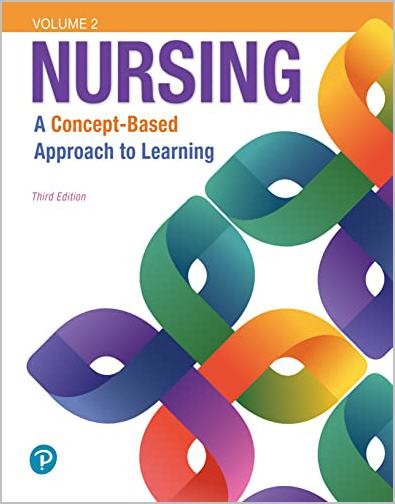
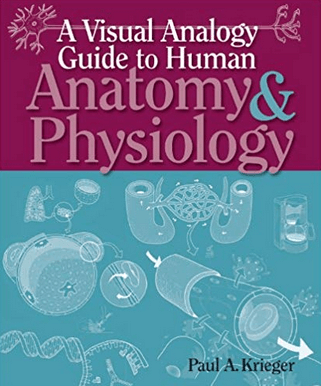
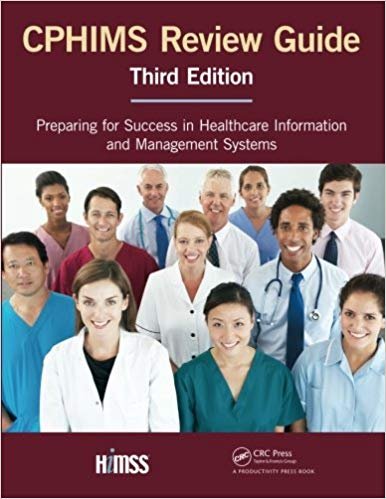
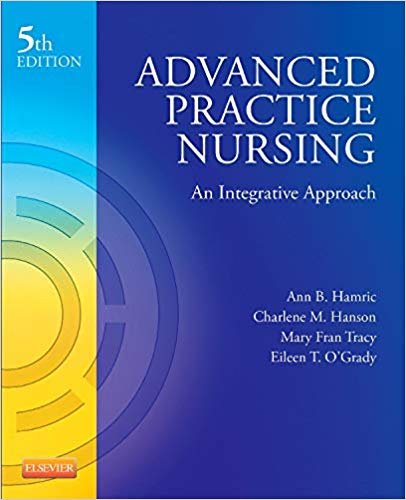
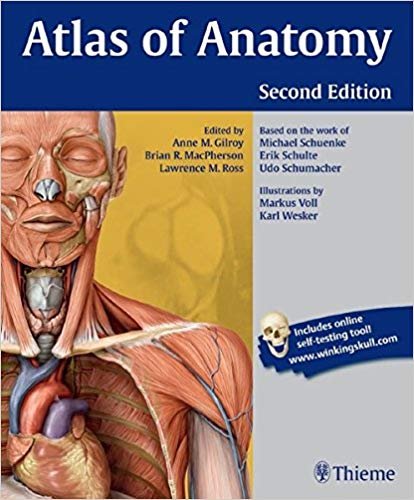
Reviews
There are no reviews yet.